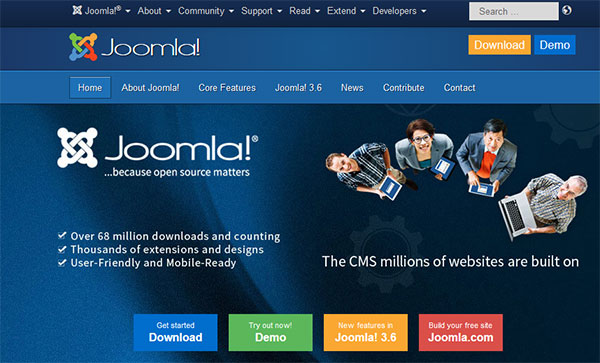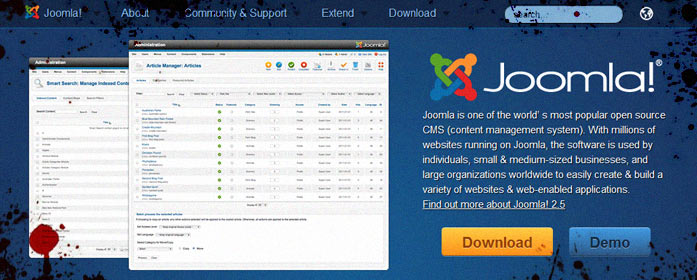

This feature also allows you to manage your emails and DNS and, in some cases, run virus scans and create backups. Control Panel: Installing Joomla, performing updates, and managing multiple projects are all made significantly easier with a powerful control panel.You’ll want your shared hosting plan to accommodate multiple versions and provide support for PHP 7.3 at the minimum. PHP Versions: As a Joomla web developer, you might work with clients whose websites use different PHP versions.
WEBSITE JOOMLA SOFTWARE
All shared hosting plans on my list come with this set of software (or better) preinstalled.

I tested many different web hosting providers, and created a list of the six best hosts for Joomla. And if you’re a Joomla app developer, you might consider a VPS plan that includes SSH root access in addition to better resources. You’ll also want a reliable host that backs up its uptime guarantee in a strong SLA. If you intend to run Joomla on a shared hosting plan, you want a server that will help your website consistently achieve optimal loading speeds. Among other things, the right host will provide a free SSL certificate, automated backups, a CDN, and the resources you need to operate Joomla smoothly. Whether you want to use Joomla to create a small business website or a complex company intranet, you need a web host with features that actually improve its functionality.
WEBSITE JOOMLA FULL
To use Joomla to its full potential, you need more.
WEBSITE JOOMLA INSTALL
If you have performed the steps correctly you should be able to access the copied website with your browser now.Most web hosting providers claim that their plans are “perfect” for Joomla, but what they really mean is that you have the option to install it on their servers – and that’s about it.
WEBSITE JOOMLA PASSWORD
This also applies for the password of this username and for the database name. Replace mysqluser with the MySQL username you have created during the database setup process mentioned above. Public $tmp_path = '/home/customer/www//public_html/newfoldertmp'

Public $log_path = '/home/customer/www//public_html/newfolderlog' Public $password ='your_mysqlusername_password' Go to Site Tools -> File Manager and open the configuration.php file for editing.īelow are the main variables you need to adjust: public $user = 'mysqluser' The final step is to adjust the core settings which are defined in the configuration.php file. Reconfigure Joomla! to work from the new location and with the new database After you have your data exported, create a new database and import the contents of the backup in it. To export it follow the instructions here. If you are not sure what is the database name, you can look it up in the configuration.php file, which is located in the document root folder of your Joomla!. Now you need to export the original website’s database. htaccess file which is hidden and might not be visible. Copy all files from the Joomla! website’s document root to the destination folder. Again you can do that via File manager or via a FTP client. Once the destination folder is created, copy the website’s files in it. You can do that via File Manager or via FTP. The first step in moving or copying your website to a new location is to create the desired destination directory.


 0 kommentar(er)
0 kommentar(er)
